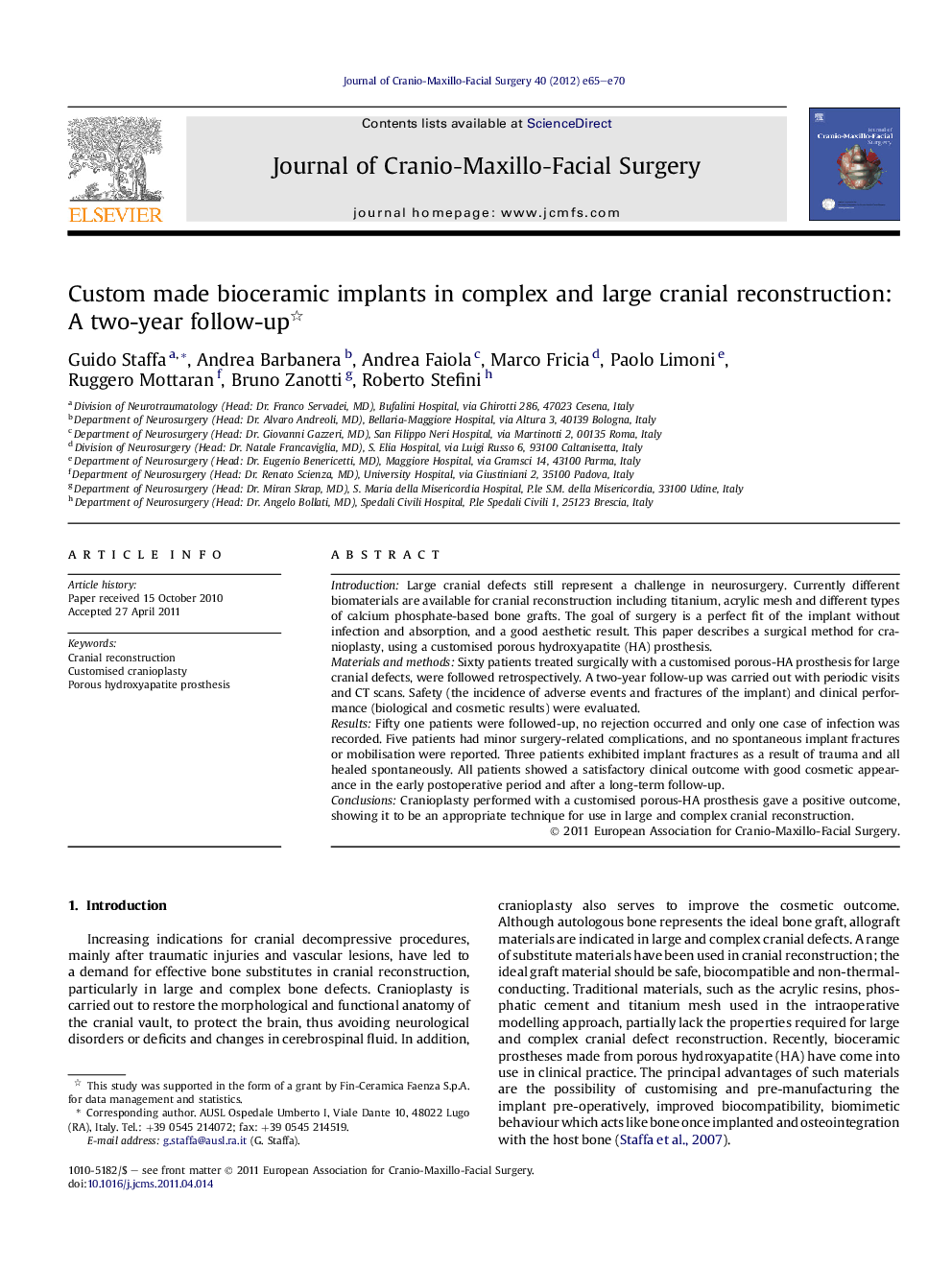| Article ID | Journal | Published Year | Pages | File Type |
|---|---|---|---|---|
| 3143553 | Journal of Cranio-Maxillofacial Surgery | 2012 | 6 Pages |
IntroductionLarge cranial defects still represent a challenge in neurosurgery. Currently different biomaterials are available for cranial reconstruction including titanium, acrylic mesh and different types of calcium phosphate-based bone grafts. The goal of surgery is a perfect fit of the implant without infection and absorption, and a good aesthetic result. This paper describes a surgical method for cranioplasty, using a customised porous hydroxyapatite (HA) prosthesis.Materials and methodsSixty patients treated surgically with a customised porous-HA prosthesis for large cranial defects, were followed retrospectively. A two-year follow-up was carried out with periodic visits and CT scans. Safety (the incidence of adverse events and fractures of the implant) and clinical performance (biological and cosmetic results) were evaluated.ResultsFifty one patients were followed-up, no rejection occurred and only one case of infection was recorded. Five patients had minor surgery-related complications, and no spontaneous implant fractures or mobilisation were reported. Three patients exhibited implant fractures as a result of trauma and all healed spontaneously. All patients showed a satisfactory clinical outcome with good cosmetic appearance in the early postoperative period and after a long-term follow-up.ConclusionsCranioplasty performed with a customised porous-HA prosthesis gave a positive outcome, showing it to be an appropriate technique for use in large and complex cranial reconstruction.
